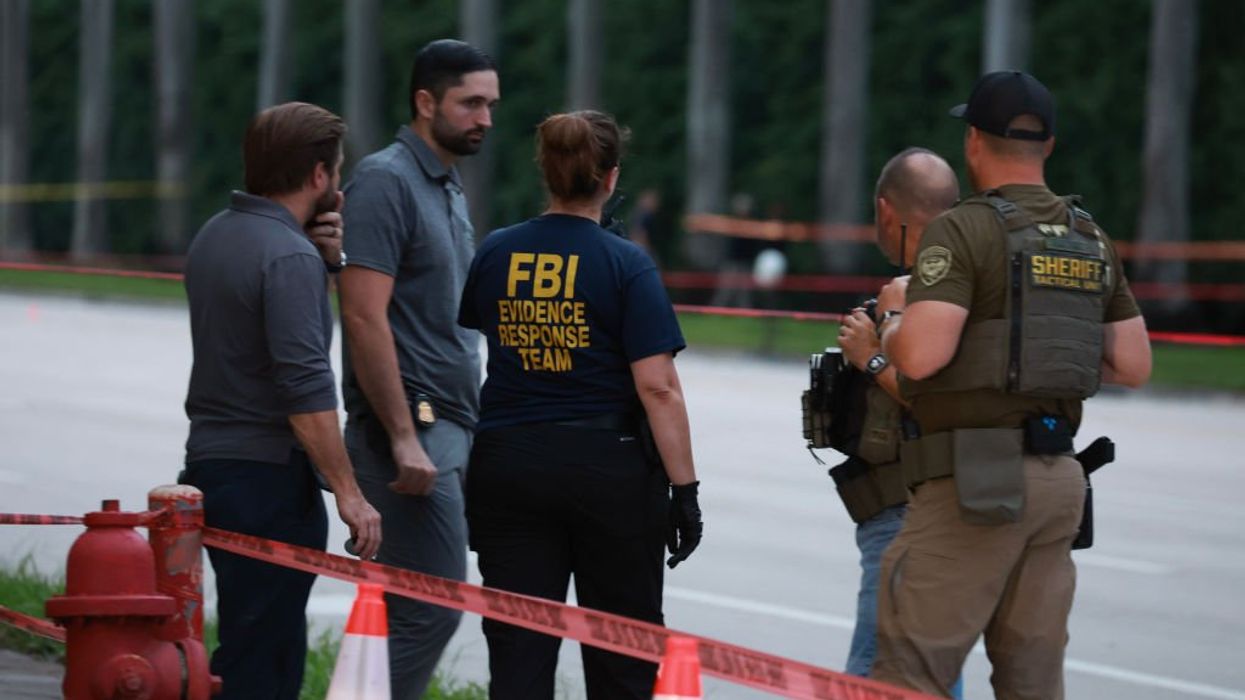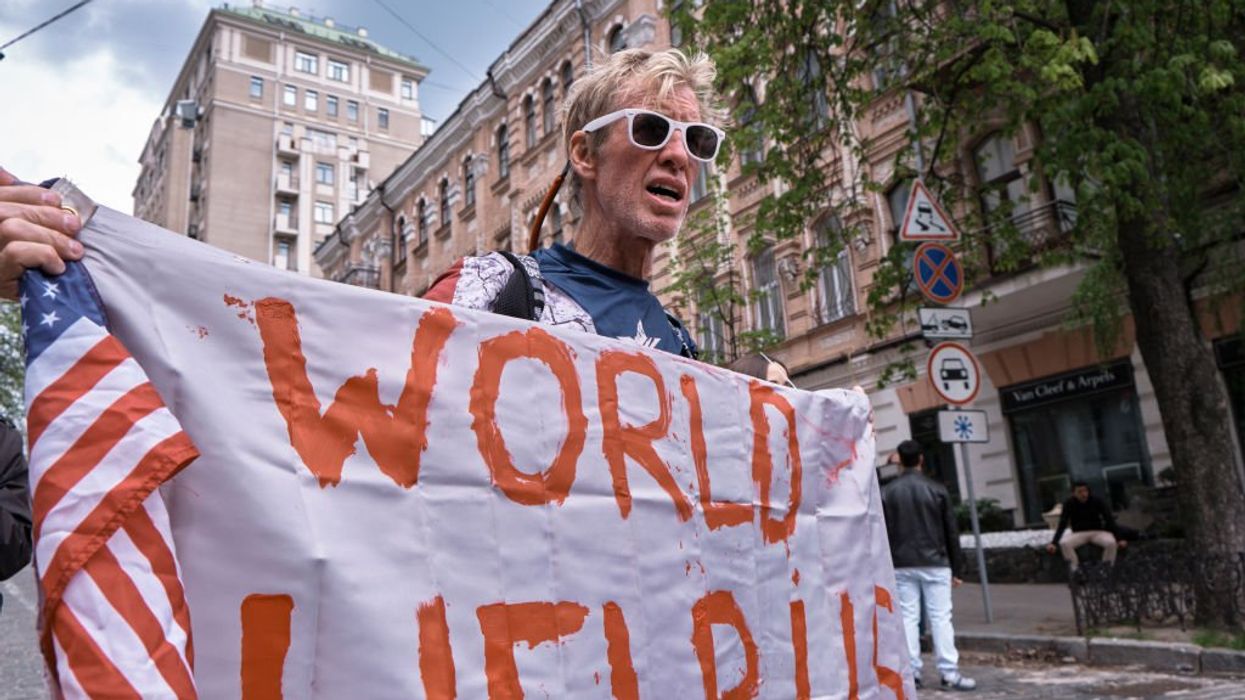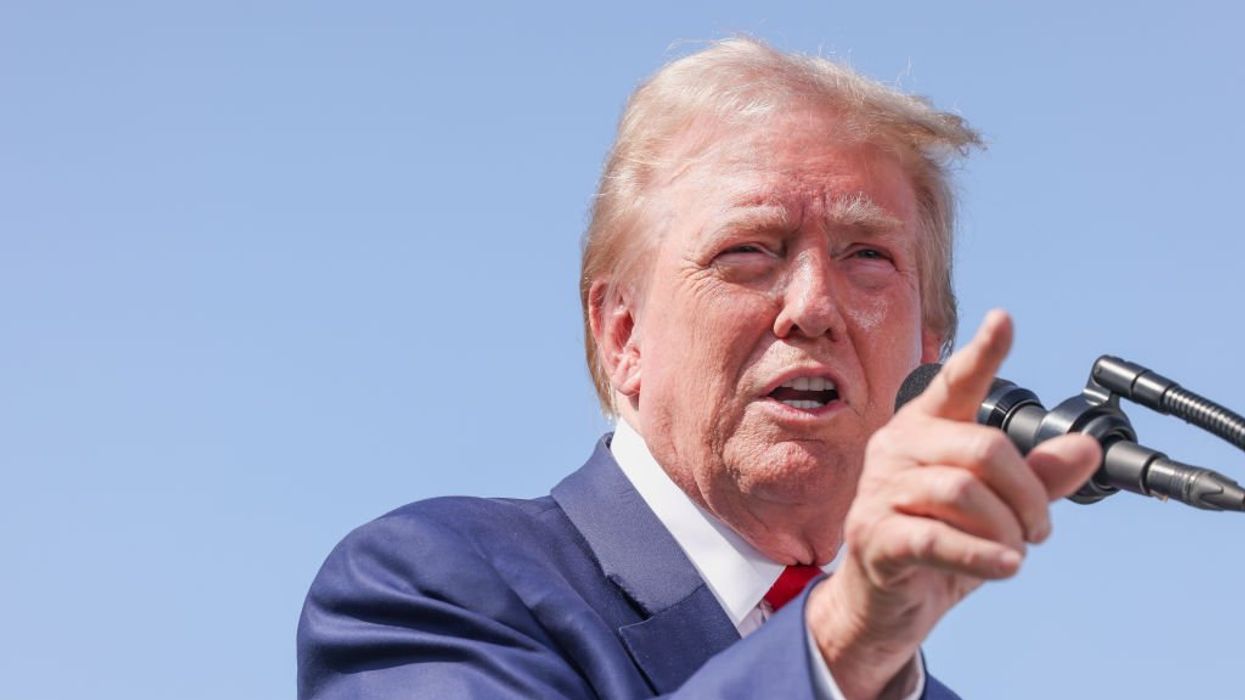The assassination attempt on Trump's life in July sent shock waves around the world, confirming what many, like Glenn, had feared: that the Biden administration and media's hostile rhetoric towards Trump would incite violence. Yet one assassination attempt wasn't enough for the political elites to change their tune. Over the weekend on Sunday, September 16th, just two months after Trump's initial failed assassination, there was another attempt on Trump's life.
This is a developing story, but some initial facts have surfaced. Here's everything we know about Trump's second assassination attempt so far:
The attempt went down at Trump's golf course in West Palm Beach.

Joe Raedle / Staff | Getty Images
Trump was playing golf on Sunday at his course in West Palm Beach, Florida when a Secret Service agent noticed a man with a rifle push the firearm’s muzzle through the perimeter of the course between 300 and 500 yards away. It was later discovered that the firearm was an AK-47-style rifle. A Secret Service agent fired at the man, who dropped the rifle and fled in a car.
A witness captured a photograph of the suspect's vehicle, which enabled authorities to apprehend the suspect on I-95 heading out of Palm Beach County into Martin County.
The suspect was prepared for a shootout.

CHANDAN KHANNA / Contributor | Getty Images
While investigating the bushes at the golf course where the suspect had been spotted, Secret Service discovered the AK-47-style rifle along with a scope, two backpacks filled with ceramic tiles, and a GoPro camera. The ceramic tiles were likely intended to be used in a bullet-proof vest, indicating the suspect was prepared for a shootout with Secret Service. The Go-Pro camera was likely intended to capture the would-be assassination on camera.
The suspect identified, Ryan Wesley Routh, was convicted of possessing a "weapon of mass destruction" in 2002.

- / Contributor | Getty Images
The apprehended suspect is 58-year-old Ryan Routh, a North Carolina native who has spent a significant amount of time in Hawaii. Routh, a former roofing contractor from Greensboro, N.C., has a lengthy criminal record in the state, including a three-hour standoff with police in 2002 in which he was convicted of carrying a “weapon of mass destruction." The reporting outlet at the time revealed that the weapon was a fully-automatic machine gun.
Routh recruited Afghan soldiers to fight in Ukraine.

Global Images Ukraine / Contributor | Getty Images
Routh has been an outspoken proponent of defending Ukraine and even flew over to the war-torn country as a civilian volunteer fighter, even though he had no prior military experience. He allegedly attempted to recruit Afghan fighters to fight in Ukraine's war effort.
Routh was interviewed by the New York Times for a piece published in 2023 about civilian volunteer fighters. In the weeks after Russia’s invasion of Ukraine in 2022, Routh posted to X, “I AM WILLING TO FLY TO KRAKOW AND GO TO THE BORDER OF UKRAINE TO VOLUNTEER AND FIGHT AND DIE."
Routh's son said his father "hates Trump."

Christina House / Contributor | Getty Images
Oran Routh, the 35-year-old son of the apprehended suspect, told the Daily Mail that his father "hates Trump" as "every reasonable person does." He added that he "does[n't] like Trump either."
Yet Oran also added that his father is “not a violent person,” and that “he’s a hard worker and a great dad. He’s a great dude, a nice guy and has worked his whole f–king life.”
However, Oran said that his father's decision to die a "martyr" was "his choice."
Trump is safe.
Trump's communications director Steven Cheung said in a statement, “President Trump is safe following gunshots in his vicinity."
Trump's Secret Service protection was "light" because he isn't a sitting president.

Joe Raedle / Staff | Getty Images
According to Palm Beach County Sheriff Ric Bradshaw, Trump’s security detail was lighter because he isn’t a sitting president — despite the previous attempt on his life in July. He continued, “But because he’s not, security is limited to the areas that the Secret Service deems possible.”

 Anadolu / Contributor | Getty Images
Anadolu / Contributor | Getty Images
 Brandon Bell / Staff | Getty Images
Brandon Bell / Staff | Getty Images Europa Press News / Contributor | Getty Images
Europa Press News / Contributor | Getty Images ANGELA WEISS / Contributor | Getty Images
ANGELA WEISS / Contributor | Getty Images